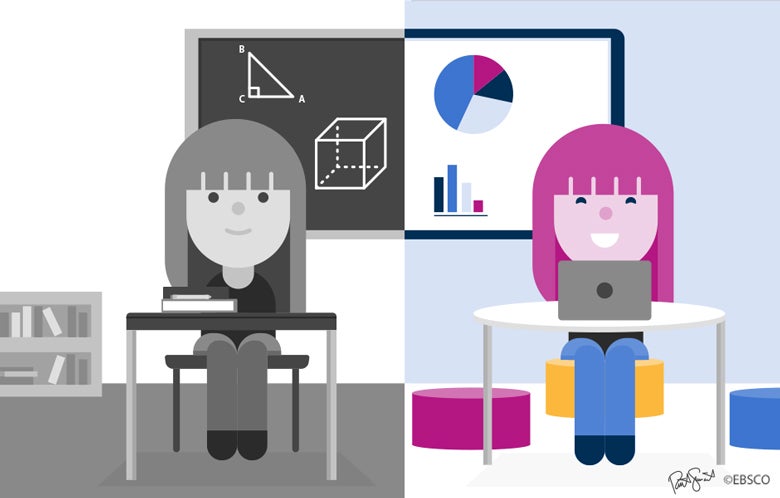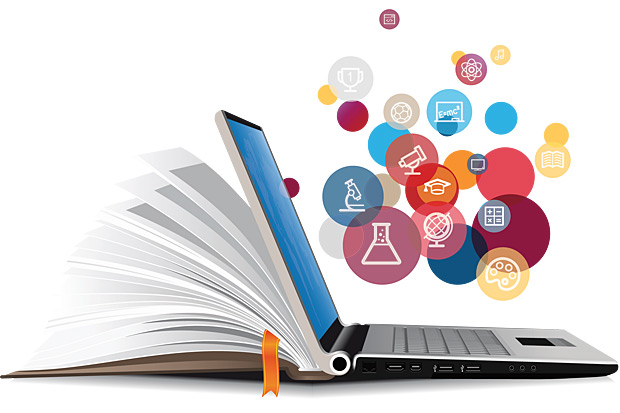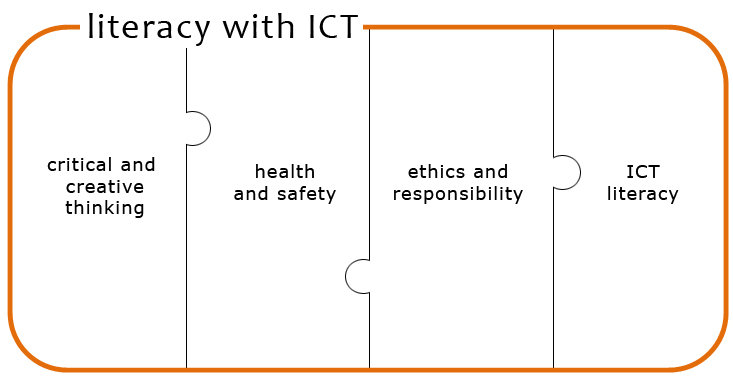Introduction
With the rapid integration of technology into our lives, the definition of what it means to be “literate” has changed drastically in the past few years. In past times one would be considered literate if they were capable of reading and writing at a basic level. But now with advancements in technology and the internet, literacy has evolved into digital literacy. Digital media is changing which skills are necessary to navigate literature and literacy in today’s world. For example: in the past, what do we have in the classroom for teaching-learning? We have books, pens and pencils, even manila paper has been overused in the past. But now, we integrate online learning tolls and the use of social media platforms. It is now important for teachers and students to know how to maximize the use of technology in their pursuit of education. This is how heavily digitalized we are nowadays. In this 21st century, for one to be considered literate at present, they must have digital literacy.
Learning Objectives
After the discussion, one must be able to:
- know and understand the importance of digital literacy in the 21st century
- identify the roles of information, media and ICT literacy as key 21st century skills
- learn to utilize these literacy skills to safely navigate through information, media, and technology
Pre-assessment
Answer the posted questions in our Google Classroom.
Deadline: Monday, 13:00hrs. Any answers posted after class has started will not be considered.
1. State a number of positive and negative changes brought about by the increasing presence of technology in our lives (in relation to learning and education). Give two each.
2. In three sentences, do you think it's possible to receive high-quality education at present without the use of technology? Why or why not?
3. Look at the photo below. What message is it trying to relay? Do you agree with the implication? Limit your answer to 5 sentences max.

Image from https://www.ebsco.com/blogs/ebscopost/learning-21st-century-technology-classroom.
Lesson content
PDF Guide available - click here!
Digital literacy - having the skills you need to live, learn, and work in a society where communication and access to information is increasing through digital technologies like internet platforms, social media, and mobile devices.
Benefits we get out of digital literacy:
- it creates new ways to teach and learn within the classroom
- students are discovering new ways to interact with their interests online and through other digital media
- students are no longer confined to just physical text when it comes to reading or learning
- as more and more young people gain access to technology, they will discover new ways to interact with the content that they enjoy

21st Century Digital Literacy Skills:
Information Literacy
Media Literacy
ICT Literacy
INFORMATION LITERACY - is a foundational skill which helps students understand facts, especially data points, that they’ll encounter online.
More importantly, it teaches how to separate fact from fiction. In this age of chronic misinformation, finding truth online has become a job all on its own. It’s crucial that we can identify honesty and factual information.

1. Define Information Literacy
Everyone should know what information literacy is and how they can use it to verify factual information. The Internet isn’t going away, so it’s very important that we keep ourselves safe from misinformation.
2. Show Examples of Trustworthy and Untrustworthy Information
Example: New York Times, school publications, other reliable news sources, credible educational sources, and so on and so forth.
In contrast, information posted on social media, most notably Facebook or Twitter, are untrustworthy and it’s easy for someone to make an unfounded claim.
That misinformation — especially when it’s made to look legitimate — is dangerous, especially to young minds.
That’s why it’s so important that we shouldn’t trust everything they see on a social network at first glance.
We need to learn how to verify that a source is trustworthy for themselves.
3. Define What Makes an Online Source Trustworthy
Students need to know what qualities make an information source credible.
- If it’s a credible article, the author is always listed
- The Author Has a Positive Reputation
- A Date Shows the Information as Current
- The Domain Is Credible (.com, .edu, .gov)
.com, .edu, and .gov are still the most credible domain endings for websites.
.club, .xxx, .info, .site, and other variations are much less credible.
- Another sign is if the Website Is Well-Designed
- The Writing Is Grammatically and Linguistically Correct
4. Encourage Critical Thinking
In addition to the above steps, it is also important that we evaluate the information ourselves. Critical thinking is the process of evaluating information, questioning it, and determining if it’s worthwhile or trustworthy.
5. Introduce Other 21st Century Skills
Information, media and technology literacy work hand-in-hand in helping us make smart choices in today's age.
MEDIA LITERACY - is the practice of identifying publishing methods, outlets, and sources while distinguishing between the ones that are credible and the ones that aren’t.
In this generation, we live in a world of powerful 24/7 media. We even have real time media coverage. There has been a drastic increase in the amount of time we are spending with media over the last decade.
If used well, the media can entertain and inform in positive ways. However, since most aren’t taught to use media thoughtfully, many media messages contribute to public health issues such as obesity, bullying and aggression, low self-esteem, depression, negative body image, risky sexual behavior, and substance abuse, among other problems.

- Expands the concept of literacy, as today’s messages come in many forms and literacy can no longer refer simply to the ability to read and write.
- Offers a solution to public health issues, such as body image issues and substance use, exacerbated by toxic media messages.
- Empowers all people to engage in a global media environment.
ICT LITERACY
The information and communication technology (ICT) literacy describes a learner’s ability to “adopt, adapt and use digital devices, applications and services” (JISC, 2014). This refers to a learner’s ability to navigate the technical requirements of being an online learner.
ICT fundamentally changes the way we live, learn, and work. As a result of these changes, technology tools, and the creative application of technology, have the capacity to increase the quality of people’s lives by improving the effectiveness of teaching and learning, the productivity of industry and governments, and the well-being of nations.
Literacy with ICT is about critical and creative thinking, digital citizenship, and knowing how to use technology safely, healthily, responsibly and ethically to meet our needs.
Post-assessment

Objective: To further raise awareness to the importance of Digital Literacy.
Target readers: Secondary students and above
-
Define and highlight the importance of Digital Literacy in the 21st Century
-
Introduce information, media and ICT technology
-
Give tips on how to utilize these literacy skills to safely navigate information, media and technology in this age
Deadline: 2nd Wednesday from discussion, 12md. Submit a soft copy of your work to the provided section in Google Classroom.

